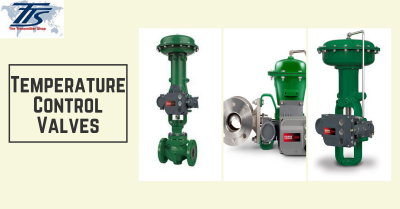Effective Control Valves: Secret Parts for Effective System Monitoring
Effective Control Valves: Secret Parts for Effective System Monitoring
Blog Article

Maximize Power Savings and Comfort With Advanced Structure Automation Controls
In the realm of contemporary style and facility monitoring, the assimilation of advanced structure automation regulates stands as an essential improvement. By harnessing the power of automation, buildings can adjust, respond, and develop in ways that were once inconceivable.
Power Efficiency Advantages
Energy performance advantages can dramatically reduce power usage and operational expenses in structures. Energy-efficient systems, such as sophisticated structure automation controls, can maximize the use of resources like illumination, home heating, and air conditioning, leading to reduced power expenses over time.
Additionally, enhanced energy effectiveness can prolong the life-span of building tools and systems. By operating more effectively, HVAC systems, lighting fixture, and other structure components experience much less damage, leading to lowered maintenance and substitute prices. In addition, energy-efficient buildings often command higher building values and rental prices, supplying long-lasting financial benefits to proprietors.
Furthermore, energy efficiency can improve occupant comfort and productivity. Effectively managed indoor environments with optimum lighting and thermal conditions create an even more helpful and pleasant work space, bring about boosted staff member satisfaction and efficiency. On the whole, the power effectiveness advantages related to innovative building automation controls are diverse, encompassing cost savings, ecological stewardship, and passenger wellness.
Improved Comfort Control
Enhancing comfort control in structure atmospheres needs a sophisticated assimilation of sophisticated automation systems for ideal occupant wellness. By utilizing advanced structure automation controls, centers can customize the interior setting to meet the certain demands and choices of passengers. control valves.
Improved convenience control surpasses fundamental temperature adjustments. It includes features such as tailored setups, tenancy sensing units, and all-natural light utilization to create a vibrant and responsive environment. By integrating these sophisticated controls, buildings can not only boost comfort but also enhance power performance by maximizing system operations based on actual tenancy and usage patterns. Ultimately, prioritizing resident convenience through advanced automation systems leads to a more enjoyable and healthier interior setting.
Functional Performance Improvements

In addition, the implementation of real-time tracking and analytics tools enables building operators to recognize power inefficiencies and operational abnormalities without delay. By continuously monitoring energy usage patterns and system efficiency metrics, changes can be made in real-time to maximize energy consumption and guarantee peak functional efficiency. control valves. In addition, integrating demand reaction techniques right into building automation controls can additionally boost operational effectiveness by dynamically readjusting power usage based on grid problems and rates signals
Indoor Environment Optimization
Efficient interior climate optimization is an essential element of building automation controls, making sure passengers' convenience and health while making the most of energy cost savings. By utilizing advanced sensors and controls, building automation systems can continuously keep track of and adjust temperature level, humidity levels, air quality, and ventilation to produce an optimal indoor atmosphere. Maintaining regular and comfy problems not just enhances owner satisfaction however additionally increases efficiency and overall health.
Indoor climate optimization additionally plays an important role in energy efficiency. By fine-tuning air conditioning, air flow, and heating systems based upon real-time information and tenancy patterns, developing automation controls can substantially minimize power usage - control valves. Applying strategies such as demand-controlled air flow and thermal zoning can assist minimize power waste while making certain that each location of the structure gets the essential conditioning.

Sustainable Atmosphere Creation
Structure automation controls not just enhance interior environment conditions for power performance and owner comfort yet additionally lay the structure for developing a lasting atmosphere via calculated monitoring of resources and systems. By incorporating innovative building automation innovations, such as sensors, actuators, and intelligent software application, facilities can adjust and keep an eye on energy click for more use in real-time to reduce waste and lower their carbon footprint. These systems make it possible for predictive upkeep, recognizing prospective problems before they intensify and optimizing devices performance to improve long life and effectiveness.
Furthermore, lasting atmosphere production prolongs beyond power management to incorporate water conservation, waste decrease, and interior air quality renovation. Structure automation controls can control water usage, identify leakages, and guarantee appropriate garbage disposal techniques, contributing to overall sustainability initiatives. best site Furthermore, by keeping an eye on and controlling air flow and purification systems, these innovations enhance occupant health and efficiency while lowering power usage connected with a/c operations.
Final Thought
Finally, progressed building automation manages deal considerable benefits in regards to power savings, comfort control, operational effectiveness, interior climate optimization, and developing a lasting setting. By executing these controls, buildings can accomplish ideal performance while minimizing energy usage and enhancing owner convenience. It appears that making use of sophisticated automation innovation is crucial in improving building performance and creating a much more lasting future.
Power effectiveness benefits can dramatically reduce energy intake and operational expenses in structures. Overall, the power efficiency advantages our website linked with innovative building automation controls are multifaceted, including expense financial savings, ecological stewardship, and passenger wellness.
Furthermore, incorporating demand feedback techniques right into structure automation controls can better enhance operational effectiveness by dynamically readjusting power use based on grid problems and rates signals.
Structure automation regulates not only maximize indoor climate conditions for energy performance and owner convenience but also lay the structure for developing a lasting environment through strategic administration of sources and systems.In conclusion, progressed building automation regulates offer significant benefits in terms of energy financial savings, comfort control, functional performance, interior environment optimization, and producing a lasting atmosphere.
Report this page